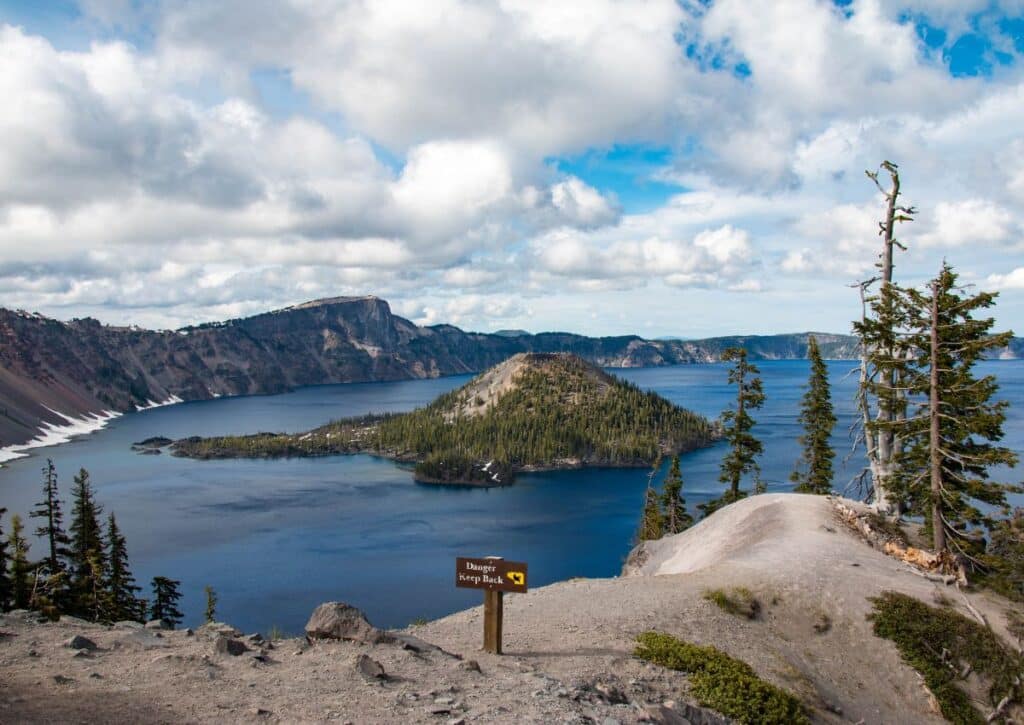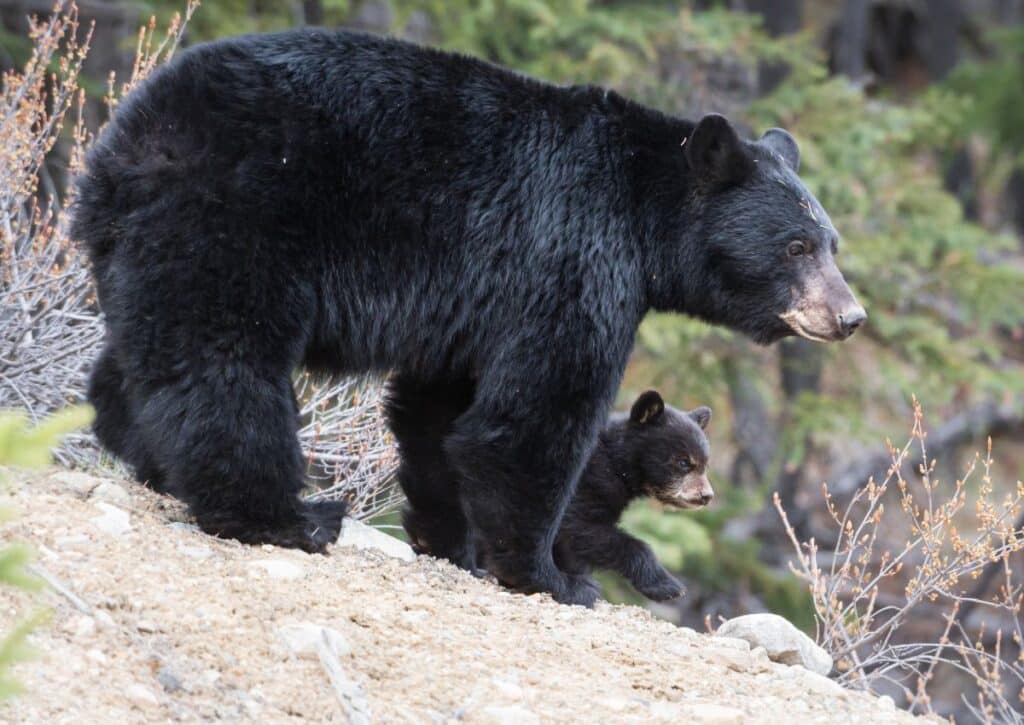Dive into Fun Facts About Crater Lake National Park! Uncover its deep mysteries, volcanic tales, and unique wonders in our captivating guide.
Ever wondered why Crater Lake is so mesmerizingly blue or heard whispers about a ghostly ship formation? Maybe you’re curious about the age-old legends tied to its waters or the mysterious floating tree stump known as the ‘Old Man’.
Dive into this treasure trove of fun facts about Crater Lake National Park, where we’ll journey through its volcanic history, take scenic rim drives, and unveil the secrets of its deep, clear waters.
Get ready to explore 25 intriguing tidbits that will make your next visit to this natural wonder even more awe-inspiring!
1. The Birth of Crater Lake
Over 7,700 years ago, a tumultuous event reshaped the landscape of what we now know as Oregon. Mount Mazama, once a towering stratovolcano, met its cataclysmic end in a colossal eruption.
This eruption was so fierce that it caused the mountain’s summit to collapse, creating a vast caldera. Over the millennia, rain and snowmelt gradually filled this depression, giving birth to Crater Lake. The pristine waters of this lake serve as a mirror to the sky, but they also hide the remnants of the once-majestic Mount Mazama.
Today, the lake stands as a testament to nature’s power to destroy and create in equal measure, offering visitors a glimpse into Earth’s fiery past.
2. America’s Deepest Lake
Plunging to a staggering depth of 1,943 feet, Crater Lake proudly holds the title of America’s deepest lake. This impressive depth is more than just a number—it’s a story of geological processes that span thousands of years.
The lake’s deep basin, a product of the collapsed Mount Mazama, has been sculpted and shaped by centuries of erosional forces.
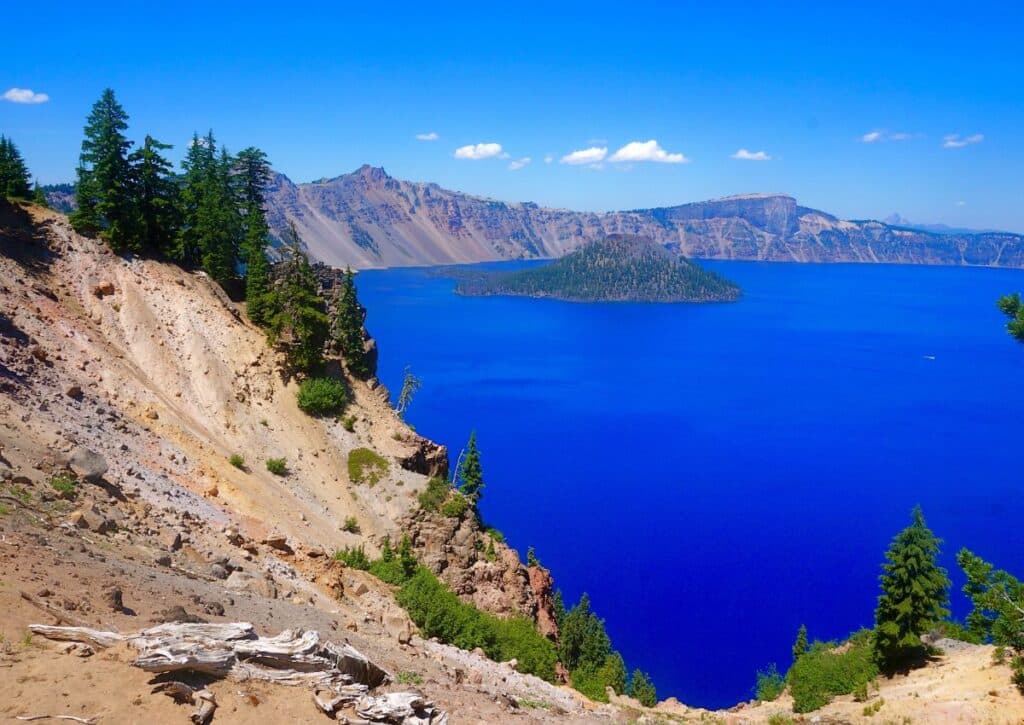
Despite its serene surface, the lake’s depth hides submerged cliffs, ancient lava flows, and unique rock formations. For context, if you were to drop the Empire State Building into Crater Lake, its tip would still be submerged by hundreds of feet of water!
3. The Blue Hue Mystery
One glance at Crater Lake, and you’re immediately captivated by its intense, almost surreal blue hue. But what’s behind this mesmerizing color? The secret lies in the lake’s clarity and depth.
Crater Lake is one of the cleanest and clearest bodies of water in the world. With minimal pollutants and suspended particles, the water absorbs colors in the red spectrum and scatters the shorter blue and green wavelengths.
This scattering effect, combined with the lake’s incredible depth, results in a rich, sapphire-blue appearance.
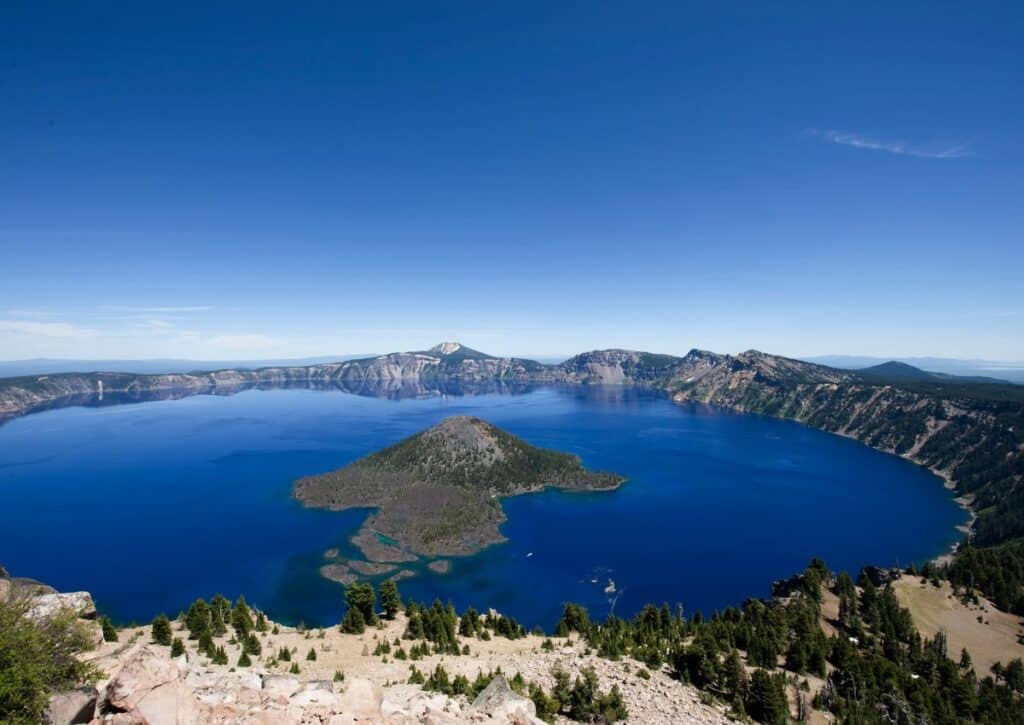
Moreover, the lake’s isolation from streams or rivers means fewer impurities, amplifying its ethereal blue beauty. It’s not just a feast for the eyes; it’s a lesson in the fascinating interplay between light and water.
4. A World of Clarity
Crater Lake’s enchanting waters aren’t just known for their mesmerizing blue hue, but also for their crystal-clear transparency.
Often ranked among the world’s clearest lakes, Crater Lake’s clarity can be attributed to several unique factors.
Firstly, the lake lacks any direct inlets or outlets, which means there’s minimal disturbance from external water sources bringing in sediments or pollutants.
Secondly, its location at a high altitude ensures a reduced amount of organic material decaying in its depths.
Additionally, the park’s dedicated preservation efforts have successfully minimized human impact, further preserving its pristine condition.
When conditions are right, one can see down to depths of over 100 feet just from the surface. This exceptional clarity offers a window into the lake’s submerged world, revealing ancient rock formations, underwater cliffs, and the deep mysteries of its origins.
5. The Tale of Wizard Island
Amidst the expansive blue of Crater Lake, Wizard Island stands out, casting a spell on its beholders. This island, with its conical shape, seems almost mystical in its setting.
Native American legends tell tales of its creation, weaving stories of gods and cataclysms. Modern geology, however, credits its formation to volcanic activity.
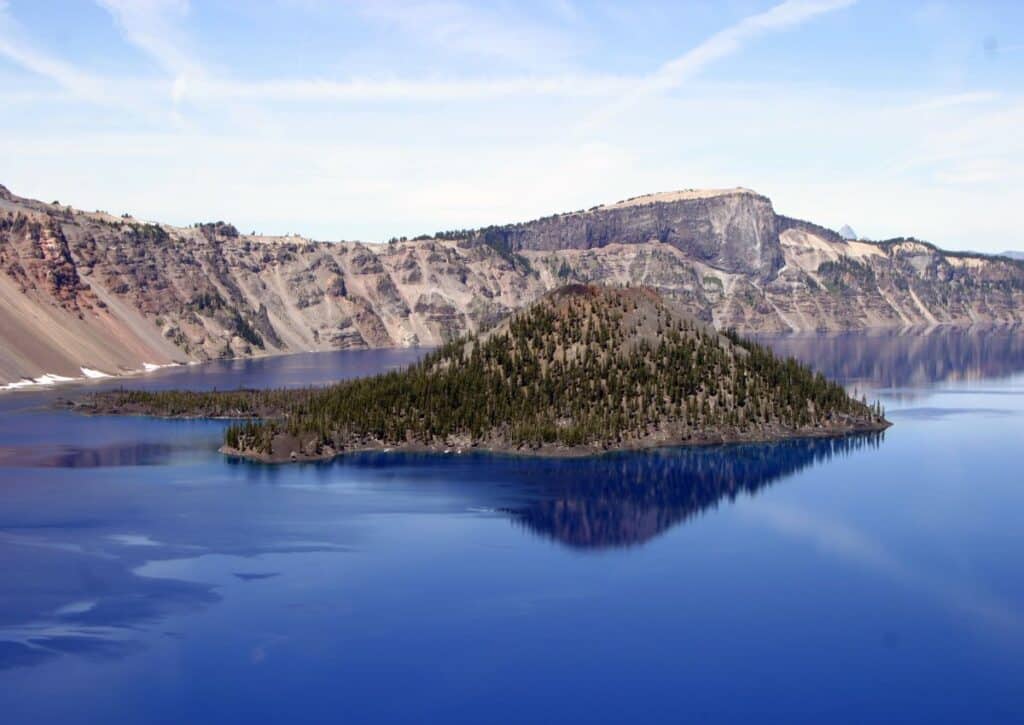
This prominent landmass is more than just an island; it’s a testament to the lake’s volcanic past, offering visitors a tangible link to the explosive history of the region.
6. Cinder Cone Creation
The story of Wizard Island’s creation is a continuation of the cataclysmic events that birthed Crater Lake. After Mount Mazama’s dramatic eruption and subsequent collapse, the caldera began to fill with water.
However, the volcanic activity was far from over. Eruptions continued beneath the water’s surface, leading to the formation of cinder cones. Wizard Island is the most prominent of these cinder cones.
As magma found its way to the surface, it interacted with the lake water, leading to explosive eruptions that piled up volcanic ash, cinders, and rocks.
Over time, this accumulation breached the water’s surface, giving rise to the island we see today. A walk on Wizard Island is essentially a journey on a relatively young volcanic landform, a stark contrast to the ancient caldera it sits within.
7. A Lake Without Inlets or Outlets
Crater Lake’s existence is a marvel of nature, further accentuated by its unique hydrological characteristic: it has no inlets or outlets. Unlike most lakes, which are fed by rivers or streams and drain out to other water bodies, Crater Lake relies solely on rain and snowmelt for its water.
This isolation has a profound impact. Without external water sources, there’s minimal introduction of sediments or contaminants, contributing to its exceptional clarity. Furthermore, the lack of outlets means the water level is a delicate balance between precipitation and evaporation, with occasional seepage.
This self-contained system has not only preserved its pristine condition but has also created a unique aquatic environment, making Crater Lake a natural wonder in its own right.
8. Fishy Business
At first glance, one might assume that a lake as vast and deep as Crater Lake would teem with a diverse range of aquatic life. However, the lake’s fish population is rather limited.
Originally, the lake was devoid of fish. It wasn’t until the late 19th and early 20th centuries that humans introduced several species, including rainbow trout and kokanee salmon. Over time, many of these species did not survive, but a few adapted to the lake’s unique conditions.
Today, while the fish population is not naturally occurring, it offers a glimpse into how species adapt to new environments. Fishing is permitted in the lake, but it’s a catch-and-release practice, ensuring the preservation of its limited aquatic inhabitants.
9. Native American Legends
The majestic Crater Lake, with its deep blue waters and intriguing landforms, has long been a subject of awe and reverence, especially for the Native American tribes of the region. Central to their lore are the tales of Skell, the sky god, and Llao, the god of the underworld.
Legend has it that a fierce battle ensued between these two deities, with Mount Mazama being torn apart in the process. Llao’s home was believed to be in the mountain, and his defeat by Skell resulted in the mountain’s collapse and the subsequent formation of Crater Lake.
These stories, passed down through generations, provide a rich tapestry of cultural and spiritual connections to the land, intertwining myth with the geological history of the area.
10. Phantom Ship’s Illusion
Navigating the sapphire waters of Crater Lake, one might be startled by the sudden appearance of a ghostly ship anchored in the distance. No, it’s not a spectral apparition, but the Phantom Ship—a striking rock formation that eerily resembles a dilapidated, ancient vessel.
This natural structure, with its jagged spires and ridges, has been sculpted over millennia by erosive forces. Standing at 170 feet tall, it’s a testament to the lake’s geological history.
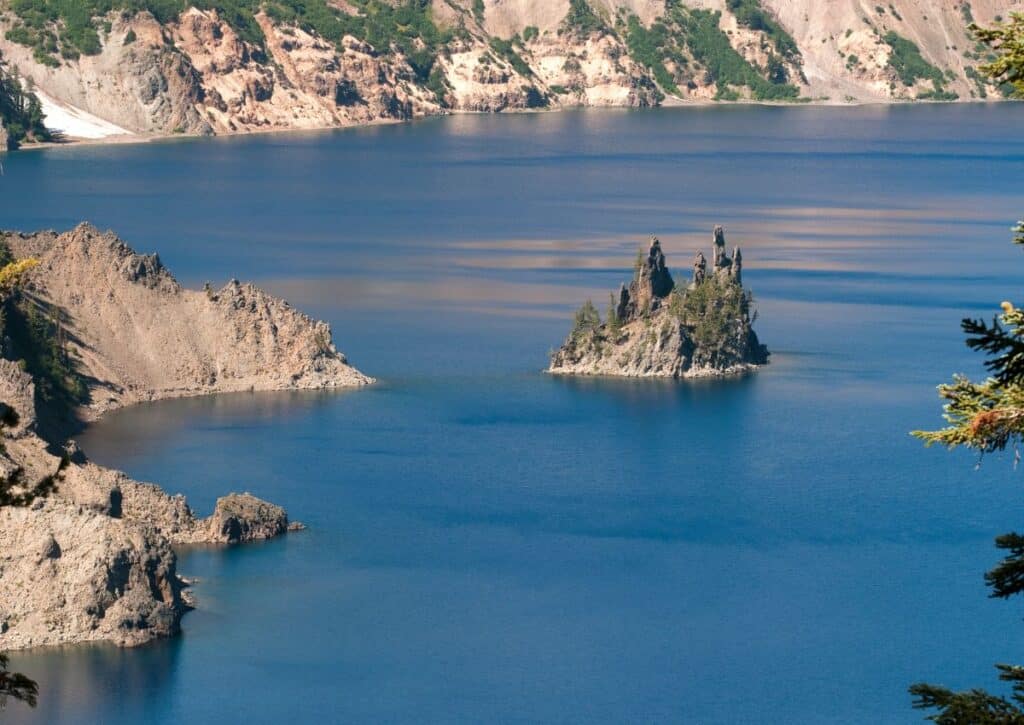
Local legends and tales often weave stories around this formation, adding a layer of mystique. As sunlight wanes, the Phantom Ship’s silhouette against the setting sun intensifies its otherworldly illusion, captivating the imaginations of all who witness it.
11. Snowy Winters
Crater Lake National Park transforms into a winter wonderland each year, boasting some of the heaviest snowfalls in the United States. On average, the park receives a staggering 44 feet of snow annually.
This thick blanket of white engulfs the landscape, creating a stark contrast with the deep blue of the lake. The snow not only enhances the park’s beauty but also plays a crucial role in replenishing the lake’s water.
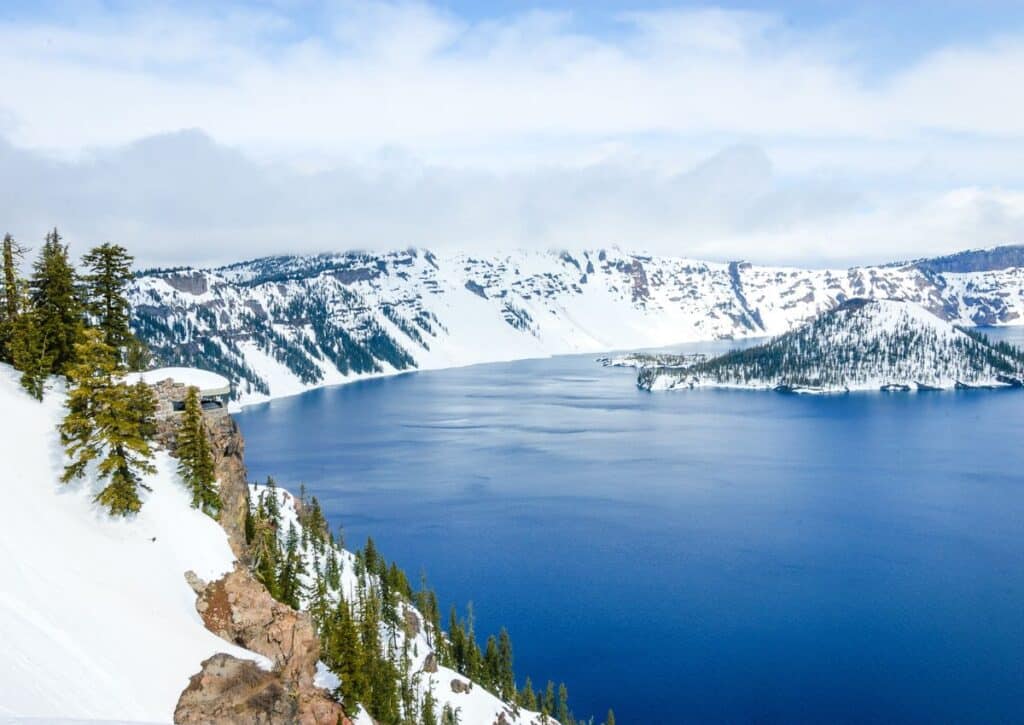
Snowshoeing and cross-country skiing become popular activities during these months, offering visitors a chance to experience the park’s serene, snow-covered splendor.
The snow-laden trees and the tranquil ambiance make winters at Crater Lake nothing short of magical.
12. The Pumice Desert
A stark reminder of Mount Mazama’s explosive past lies to the north of Crater Lake—the Pumice Desert. This vast, flat expanse, covering nearly eight square miles, is a result of the colossal eruption that birthed the lake.
When Mazama erupted, it spewed a thick layer of pumice and ash, which settled and blanketed the area. Despite its name, this “desert” is not devoid of life.
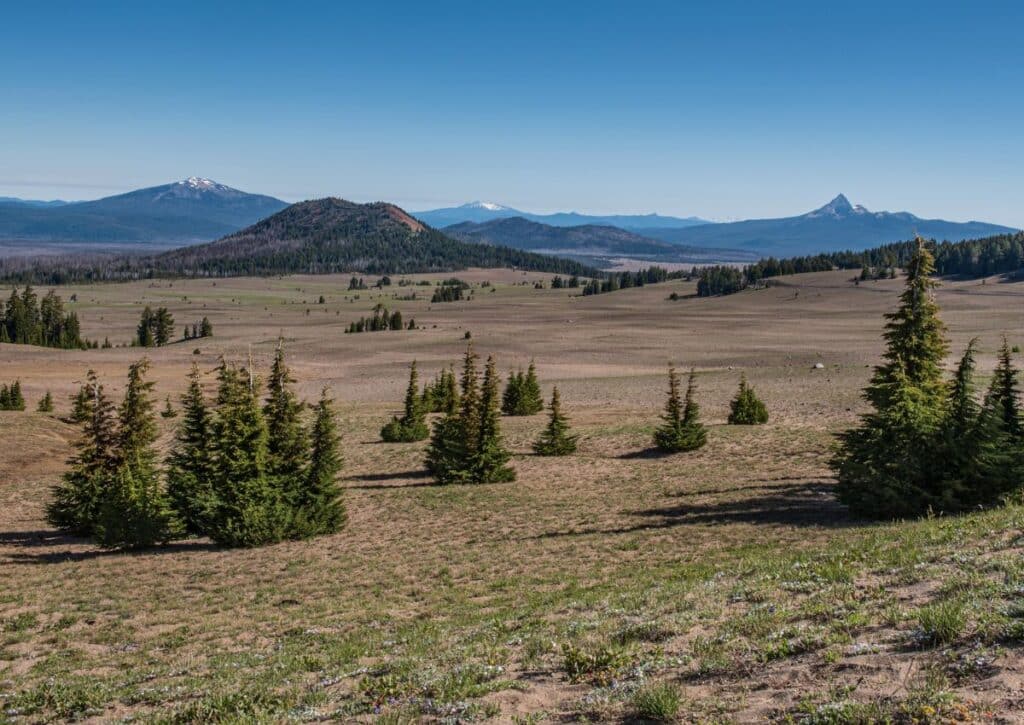
Sparse vegetation dots the landscape, struggling to take root in the porous soil. The Pumice Desert serves as a visual testament to the sheer force of volcanic eruptions, offering a unique and contrasting landscape to the lush surroundings typical of the Pacific Northwest.
13. No Swimming Allowed
Crater Lake’s serene and pristine waters might beckon the inner swimmer in many, but taking a dip is not as straightforward.
Swimming is restricted in the lake, primarily to protect its unique ecosystem and maintain the water’s exceptional clarity. The only location where visitors can legally swim is at the Cleetwood Cove, where the lake’s shoreline can be accessed.
Even here, the icy cold temperatures, a result of the lake’s depth and altitude, make it a short-lived experience for most. These restrictions ensure that the lake remains one of the purest and most untouched bodies of water, preserving its natural beauty for future generations.
14. Old Man of the Lake
Among the many intriguing tales of Crater Lake, the “Old Man of the Lake” stands out. This isn’t a tale of a wise elder but rather a peculiar tree stump that’s been floating vertically in the lake for over a century!
The Old Man, a full-sized tree stump, drifts with the winds and currents, often traveling significant distances. What’s baffling is its upright position, with roughly four feet protruding above the water.
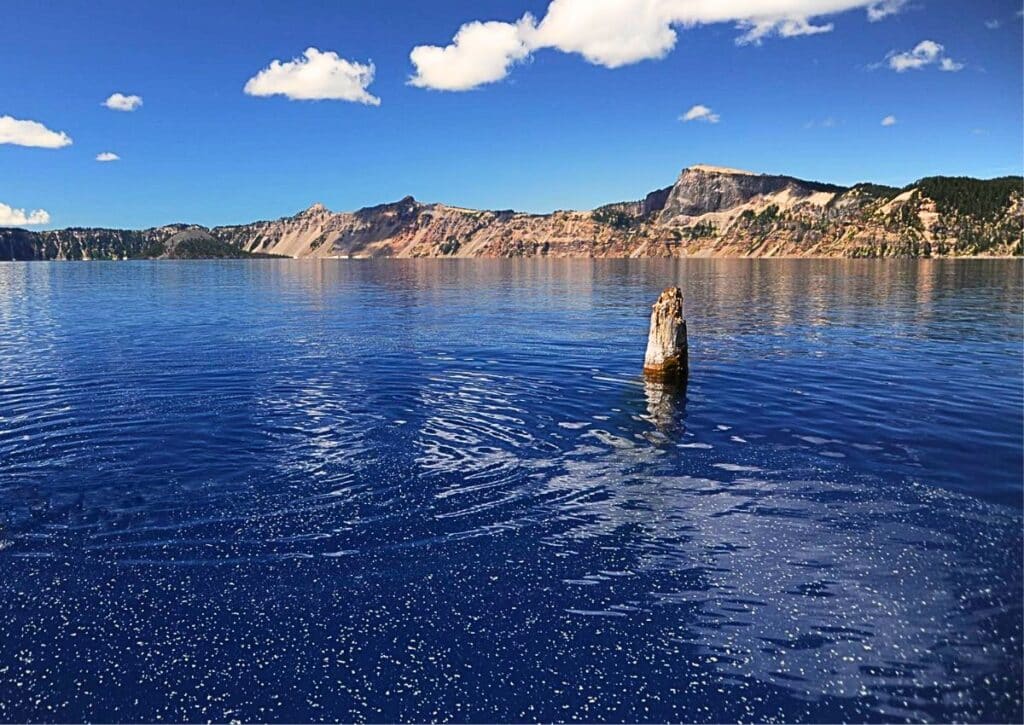
Studies have shown that the submerged end of the stump is weighted down by rocks, keeping it vertical. The Old Man has become a symbol of the lake’s mysteries, captivating visitors and scientists alike.
15. Volcanic Legacy
Crater Lake National Park is a geologist’s dream, bearing witness to a rich volcanic legacy. The lake itself sits within the caldera of Mount Mazama, a once-mighty stratovolcano that erupted violently about 7,700 years ago.
This eruption, one of the most intense in the Cascade Range’s history, spread ash and pumice over vast areas of the Pacific Northwest. Today, the park boasts a variety of volcanic formations, from cinder cones like Wizard Island to fumaroles and lava tubes.
The surrounding landscape is dotted with evidence of past lava flows, pumice deposits, and other volcanic remnants. This volcanic legacy, intertwined with indigenous lore and modern scientific study, makes Crater Lake a fascinating junction of history, culture, and geology.
16. The Watchman Lookout
Perched high above the western rim of Crater Lake stands The Watchman Lookout, offering one of the most breathtaking panoramic views of the lake and its surroundings.
This popular viewpoint, reaching an elevation of 8,013 feet, was historically a strategic location for spotting forest fires in the region. In the 1930s, the Civilian Conservation Corps constructed a fire lookout tower, which stands to this day as a testament to the park’s conservation efforts.
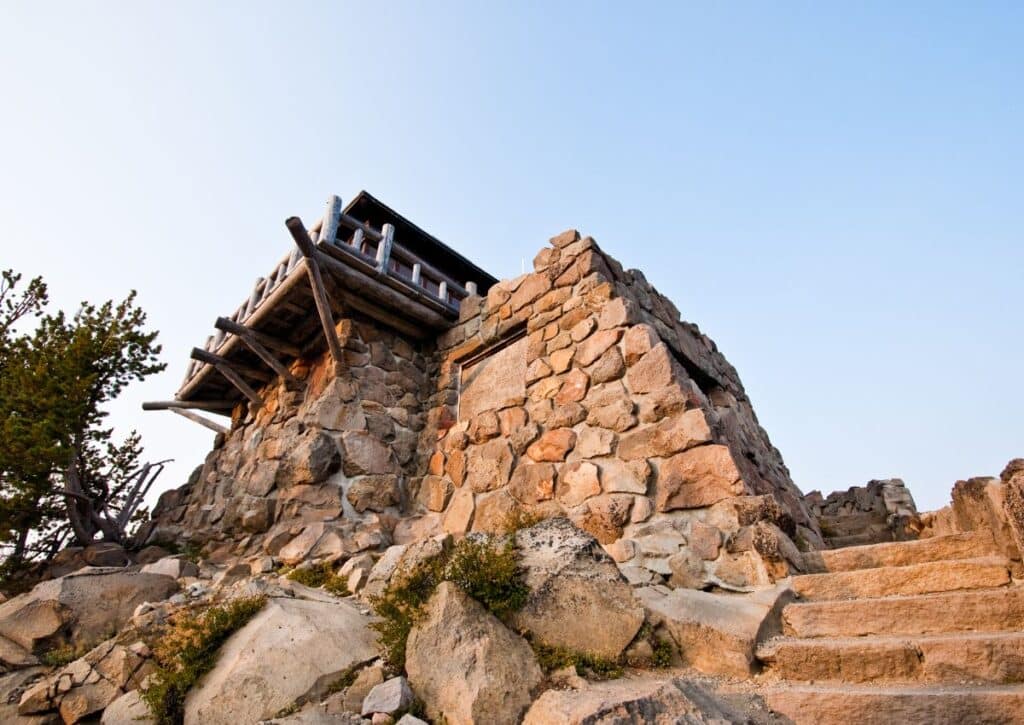
Visitors trekking up the Watchman Peak Trail are rewarded not only with unparalleled vistas but also with a glimpse into the park’s history and the role of fire lookouts in preserving our national treasures.
17. Diverse Wildlife
The pristine environment of Crater Lake National Park is a haven for a diverse range of wildlife. From the skies to the dense forests, life thrives in this protected sanctuary.
Majestic birds like the Clark’s nutcracker and mountain bluebird soar above, while the ground below teems with creatures such as the Roosevelt elk, black bears, and mule deer.
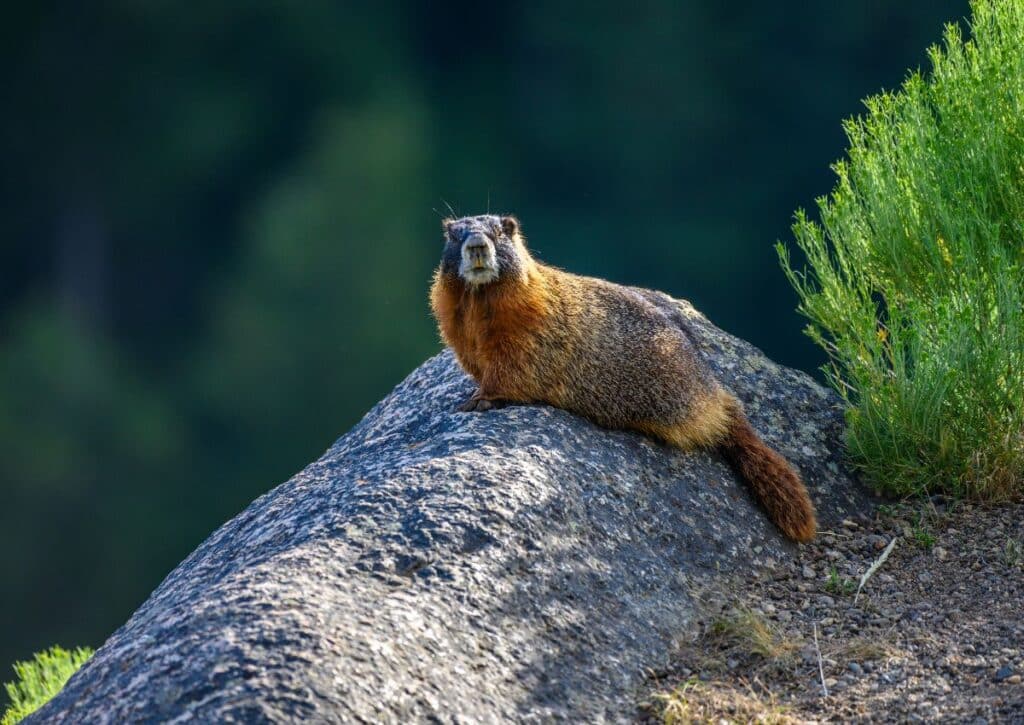
The park’s isolation, combined with its varied habitats—from alpine meadows to old-growth forests—creates a unique ecosystem.
The nocturnal visitors might even catch a glimpse of elusive animals like the bobcat or the pine marten. This rich biodiversity underscores the importance of conservation efforts and the role national parks play in preserving native fauna.
18. The Hidden Cleetwood Cove
While Crater Lake’s vast expanse might beckon many to its shores, there’s only one spot where visitors can legally access the water’s edge: the hidden Cleetwood Cove.
Nestled on the northern side of the lake, the Cleetwood Cove Trail provides a winding path down to the lake’s shore. It’s not just a gateway to the lake’s cool waters but also the launch point for boat tours.
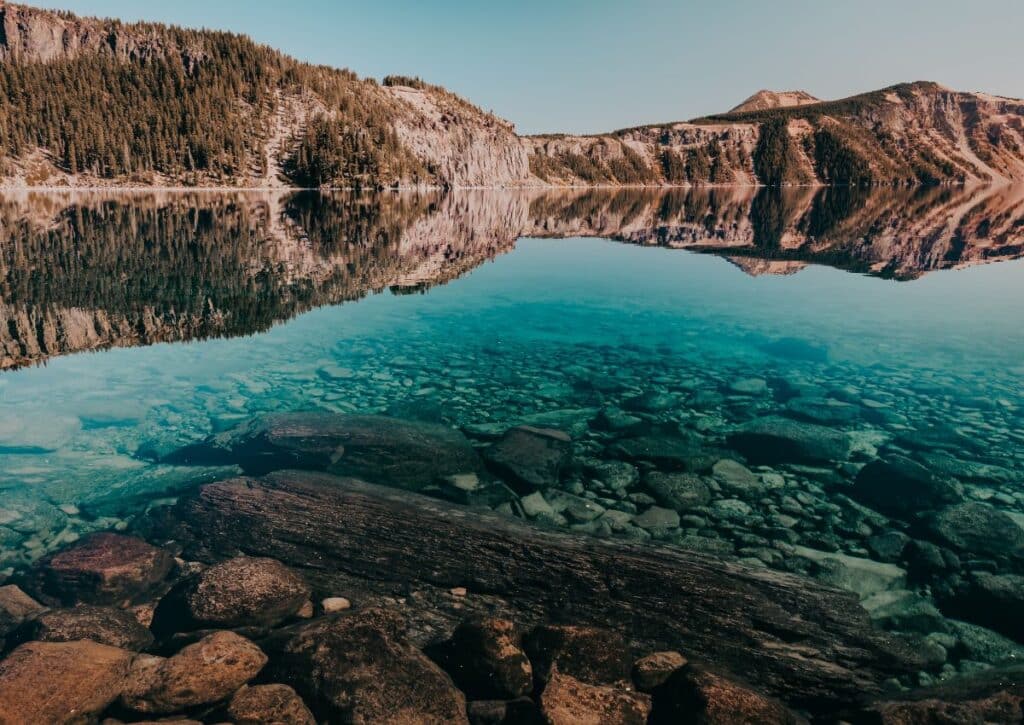
The descent, though steep at times, offers stunning views of the lake and its dramatic cliffs.
Once at the cove, visitors can feel the lake’s cold waters, throw a line for fishing, or simply marvel at the lake’s beauty from a different vantage point. It’s a must-visit for anyone seeking a closer connection with Crater Lake’s natural wonders.
19. Crater Lake’s Original Name
Long before it was known as Crater Lake, the indigenous Klamath tribe of the region revered this pristine body of water and called it “Giiwas.” To the Klamath people, Giiwas was more than just a lake; it was a sacred site, intertwined with their spiritual beliefs and cultural narratives.
Legends of battles between gods and tales of its creation were passed down through generations, with Giiwas at the center of these stories.
While the name Crater Lake reflects its geological origins, remembering its original name, Giiwas, serves as a tribute to the rich indigenous heritage and the deep spiritual connection the land holds for its original inhabitants.
20. The Park’s Status
Crater Lake’s awe-inspiring beauty and unique geological features did not go unnoticed by early explorers and settlers. Recognizing its significance, efforts were made to protect this natural wonder.
On May 22, 1902, President Theodore Roosevelt designated Crater Lake as a National Park, making it the fifth oldest national park in the United States. This designation ensured its preservation from commercial exploitation and development.
Over the years, the park’s boundaries have been adjusted to further conservation efforts, and today, it spans over 183,000 acres. The National Park status underscores the nation’s commitment to preserving its natural and cultural treasures for future generations.
21. The Depth Mystery
While Crater Lake is widely recognized as the deepest lake in the United States, determining its exact depth has been a subject of intrigue and challenge.
Over the years, various measurements have been taken, with depths ranging from 1,932 feet to 1,949 feet. Factors like seasonal water levels, methodology, and equipment used for measurements contribute to these variations. Modern sonar techniques have provided more accurate readings, placing the depth at around 1,943 feet.
However, the lake’s depth is not static. Precipitation, evaporation, and seepage play roles in its water levels. Beyond the numbers, the depth mystery adds another layer to the lake’s allure, reminding us of the complexities and wonders of the natural world.
22. Rim Drive Adventure
Encircling the mesmerizing Crater Lake is the iconic Rim Drive, a 33-mile scenic route that offers unparalleled views of the lake and its surrounding landscapes.
As travelers navigate this winding drive, they are greeted with ever-changing vistas—from towering cliffs and dense forests to expansive meadows dotted with wildflowers. Strategically placed viewpoints and pullouts allow for stops to soak in the beauty, capture photographs, or simply marvel at nature’s grandeur.
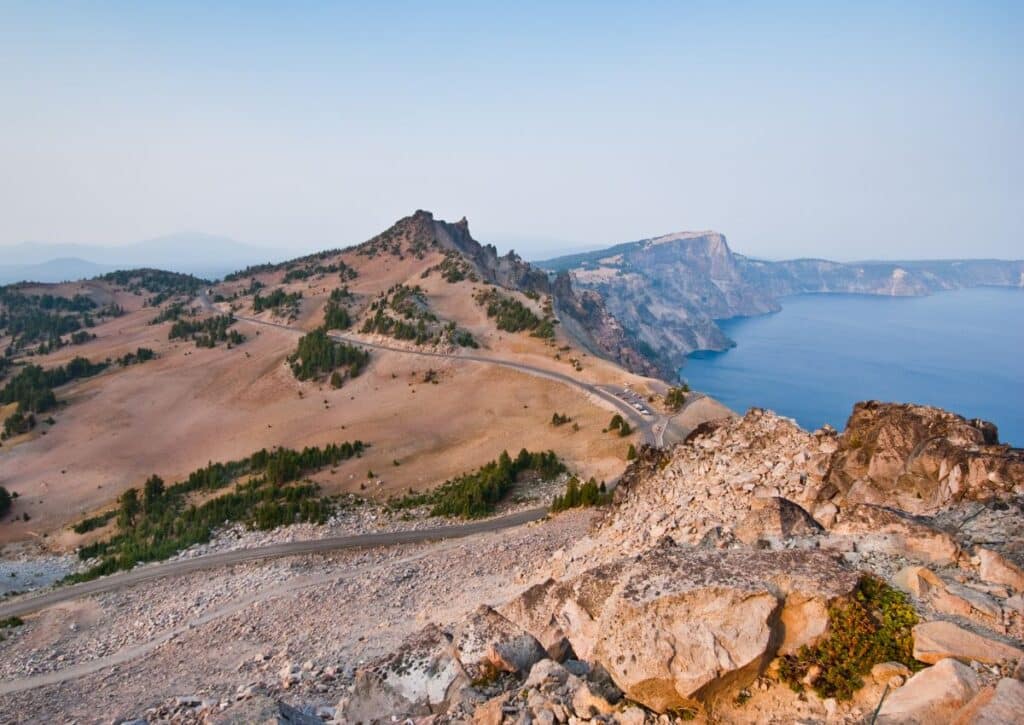
Whether covered in a blanket of summer wildflowers or the glistening snow of winter, the Rim Drive experience is a must for every visitor, providing a 360-degree exploration of Crater Lake’s splendor.
23. The Role in Astronomy
Crater Lake isn’t just a daytime marvel; come nightfall, it transforms into an astronomer’s paradise. The lake’s exceptional clarity, combined with its altitude and isolation from major urban light sources, creates ideal conditions for stargazing.
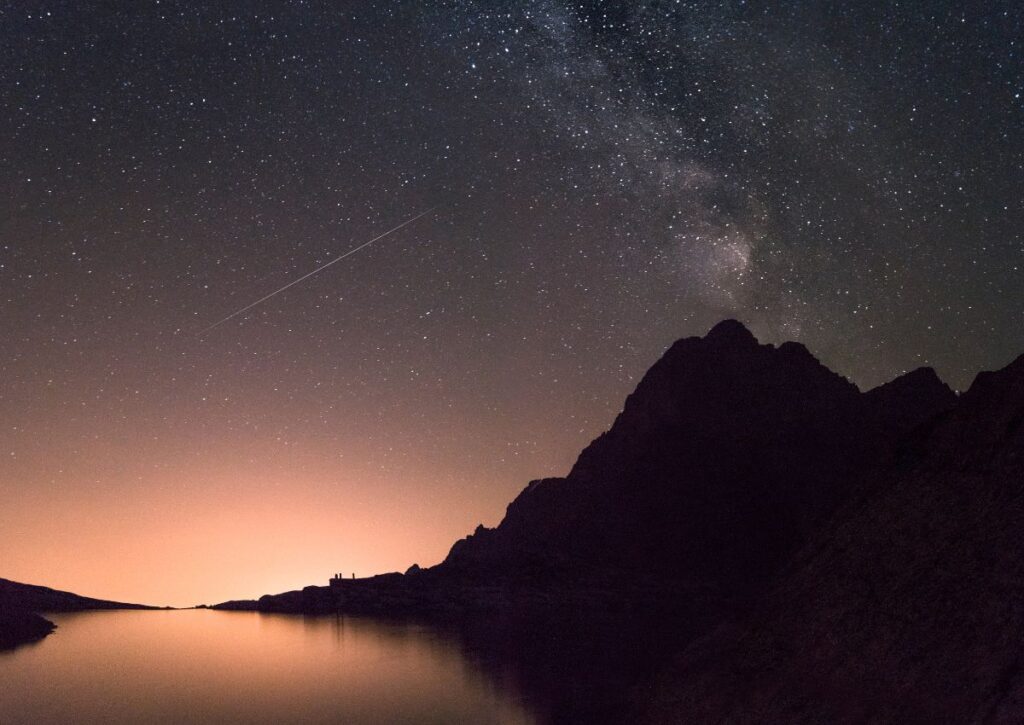
The dark skies above the park become a canvas for twinkling stars, planets, and the occasional meteor streak. Events like the Milky Way viewings and meteor showers attract both amateur stargazers and seasoned astronomers.
The park often hosts star parties and night sky programs, allowing visitors to delve deeper into the cosmic wonders and understand the significance of preserving dark skies.
24. Climate Extremes
Crater Lake National Park is a land of climatic contrasts. Its high altitude location subjects it to some of the heaviest snowfalls in the country, with winters often blanketing the park in over 40 feet of snow.
This snowy season can extend from October to June, transforming the park into a winter wonderland. Conversely, summers, though short, are warm and dry, with wildflowers bursting into bloom and offering a colorful contrast to the deep blue of the lake.
These dramatic seasonal changes not only shape the park’s landscapes but also influence the activities and experiences available to visitors throughout the year.
25. Preservation Efforts
Ensuring that Crater Lake National Park retains its natural beauty and ecological balance is a continuous endeavor. Over the years, numerous preservation efforts have been put in place.
From regulating visitor activities and reducing human impact to initiating reforestation projects and controlling invasive species, the park’s management prioritizes conservation. Educational programs inform visitors about responsible practices, ensuring that they play a role in the park’s preservation.
Collaborative research projects, often in partnership with environmental and academic institutions, further the understanding of the park’s unique ecosystems and inform future conservation strategies. These collective efforts ensure that Crater Lake remains a cherished natural wonder for generations to come.
In Conclusion
Navigating through the fun and fascinating facts of Crater Lake National Park has been nothing short of an exhilarating journey! Who knew that a lake could have so many tales to tell, from ghostly ship illusions to vertically floating tree stumps? It’s clear that Crater Lake isn’t just a sight for sore eyes; it’s a playground for curious minds.
As we wrap up this rollercoaster of revelations, we hope you’re left with a mix of awe, amusement, and a thirst to experience these wonders firsthand. Remember, every fact is an invitation to explore, and Crater Lake has rolled out quite the welcome mat! Happy adventuring!

